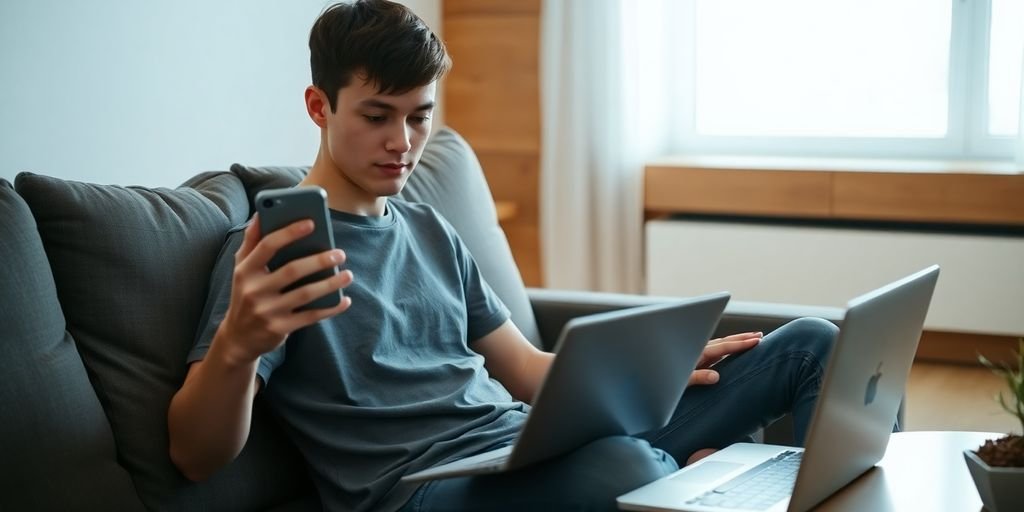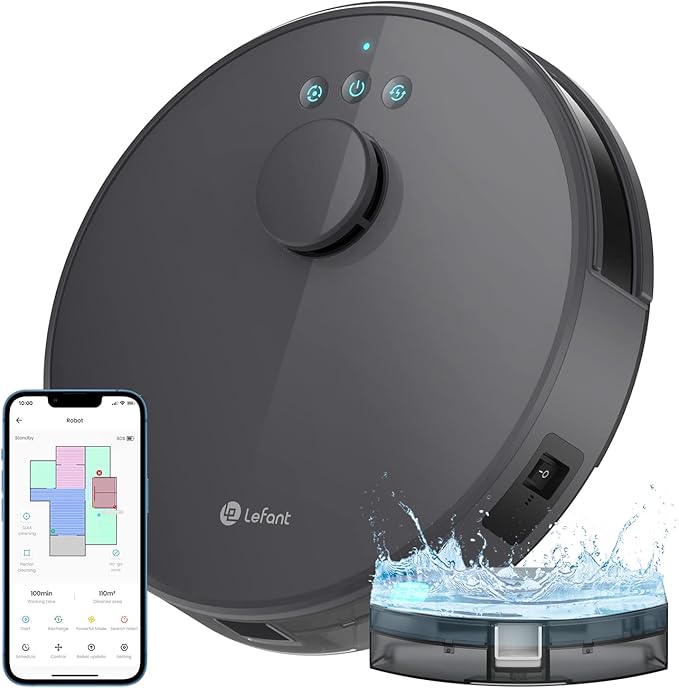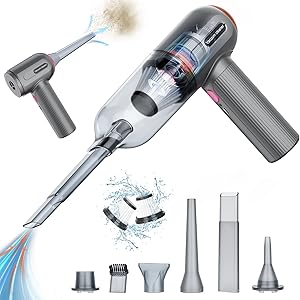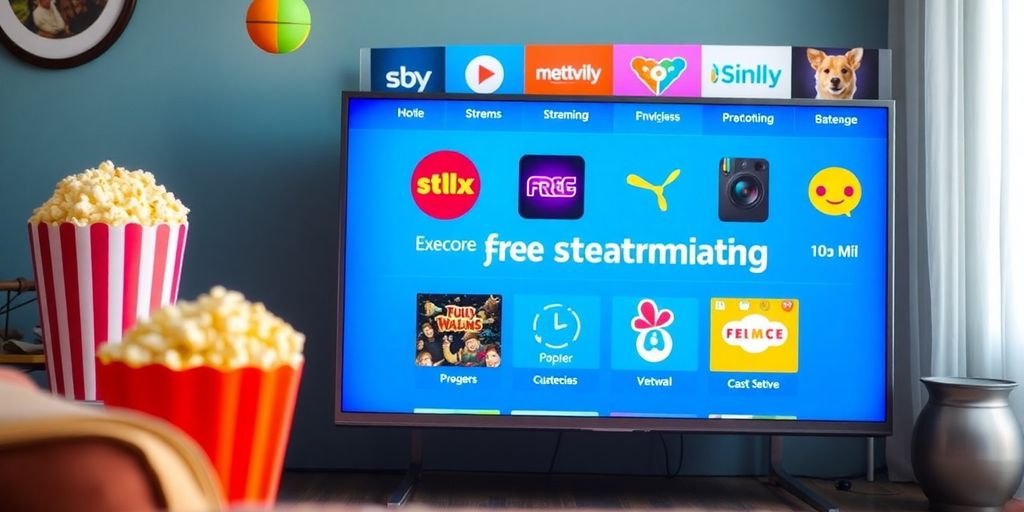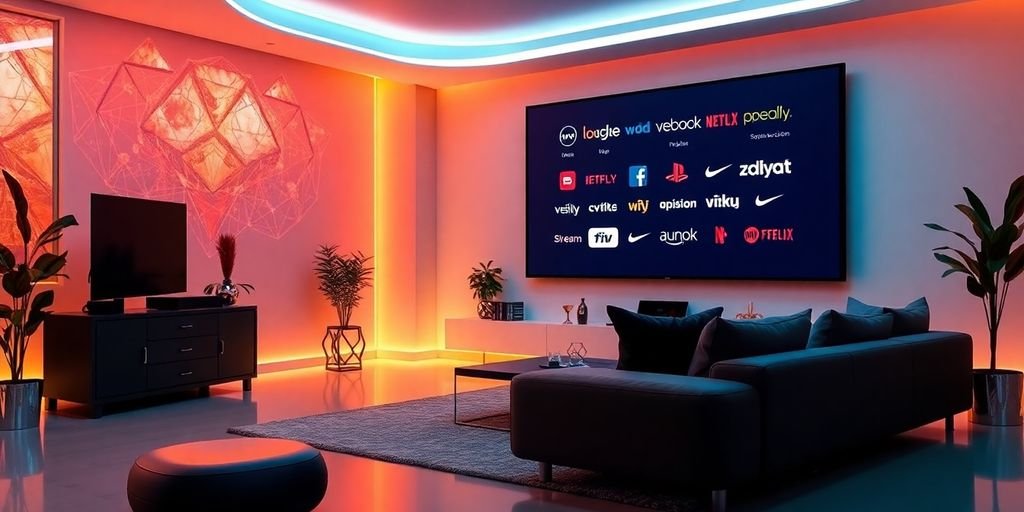In today’s fast-paced world, staying on top of your tech is more important than ever. Whether you’re trying to make your home a bit smarter, keep your online details safe, or just get more from your phone, a few simple tech tips can make a big difference. This article is all about helping you get the most out of your gadgets and the internet, making life a bit easier and more secure for every Brit.
Key Takeaways
- Making your home smarter can really change how you live day-to-day.
- Keeping your digital life safe means using strong passwords and knowing about online scams.
- Regularly updating your devices and getting rid of old files helps them run better.
- Your mobile phone has loads of features and apps that can help with everyday tasks.
- There are many ways to make the most of online entertainment, from streaming to new content.
Smart Home Essentials

Embracing Connected Living
I’ve been thinking a lot about how much our homes are changing. It’s not just about having the latest gadgets anymore; it’s about creating a space that adapts to our needs. For me, it started with a simple smart thermostat – being able to adjust the temperature from my phone is a game-changer, especially during those unpredictable British weather days. But it’s more than just convenience. It’s about making our homes more efficient and responsive to our lifestyles.
- Smart lighting systems
- Automated blinds
- Voice-controlled assistants
Automating Your Abode
Automation is where things get really interesting. I’m not talking about some futuristic, Jetsons-style setup, but rather practical solutions that simplify daily tasks. Imagine your lights dimming automatically as the sun sets, or your heating adjusting based on your location. It’s about creating a home that anticipates your needs. I’ve started experimenting with routines that trigger different actions based on the time of day, and it’s surprisingly effective.
It’s about creating a living space that is both intuitive and responsive, adapting to your rhythms and preferences without requiring constant manual adjustments.
Future-Proofing Your Home
Thinking long-term is key. I’m trying to make sure any tech I bring into my home is adaptable and won’t be obsolete in a few years. This means choosing devices that are compatible with different platforms and that can be easily updated. I’m also considering the infrastructure – ensuring I have a strong and reliable Wi-Fi network is crucial for supporting all these smart devices. It’s an investment, but one that will pay off in the long run.
Here’s a few things I’m keeping in mind:
- Prioritise devices that support open standards.
- Invest in a mesh Wi-Fi system for reliable coverage.
- Consider the long-term energy efficiency of your smart devices.
Boosting Your Digital Security
Okay, so let’s talk about keeping your digital life safe. It’s something I think about a lot, especially with all the scams going around. It can feel overwhelming, but honestly, a few simple steps can make a massive difference. I’m not a tech expert, but I’ve picked up a few things that work for me.
Protecting Your Personal Data
Your personal data is like gold dust to cybercriminals, so keeping it safe is super important. I always think about what I’m sharing online. Do I really need to give that website my date of birth? Probably not. I’ve also started using privacy-focused search engines and browsers. They don’t track you as much, which is a bonus. Also, I regularly check my social media privacy settings. You’d be surprised how much info is publicly available by default. It’s worth taking the time to lock things down a bit. For businesses, cybersecurity is essential to protect customer data and maintain trust.
Strong Passwords and Two-Factor Authentication
Passwords are your first line of defence, so make them count. I know it’s a pain, but "password123" just isn’t going to cut it. I use a password manager to generate strong, unique passwords for every account. It’s a lifesaver. And two-factor authentication (2FA)? Turn it on for everything that offers it. Seriously. It adds an extra layer of security that makes it much harder for hackers to get in, even if they somehow get hold of your password. It might seem like a hassle, but it’s worth it for the peace of mind.
Recognising Online Scams
Scammers are getting cleverer all the time, so it’s important to stay vigilant. I’ve learned to be suspicious of anything that seems too good to be true. That email promising a free iPhone? Definitely a scam. I always check the sender’s email address carefully, and I never click on links in emails from unknown senders. Phishing scams are a real problem, and they can be very convincing. If in doubt, go directly to the website of the company in question, rather than clicking on a link in an email. And remember, no legitimate company will ever ask you for your password or bank details via email.
I’ve found that taking a moment to pause and think before clicking on anything suspicious has saved me from potential scams more than once. It’s a simple habit, but it can make a big difference.
Optimising Your Devices

I’m always looking for ways to make my tech run smoother and faster. It’s amazing how much better your devices can perform with just a little bit of care and attention. Here’s what I’ve learned about keeping my gadgets in tip-top shape.
Keeping Software Up-To-Date
It might seem like a pain, but keeping your software updated is super important. I know, those update notifications can be annoying, but they often include crucial security patches and performance improvements. I try to update my operating systems, apps, and drivers as soon as updates are available. It really does make a difference in how smoothly everything runs. Plus, outdated software can be a security risk, so it’s best to stay on top of things. I find setting aside a specific time each week helps me remember to check for updates.
Clearing Out Digital Clutter
My digital life used to be a complete mess! Files scattered everywhere, apps I hadn’t used in years… it was chaos. Now, I regularly clear out any unnecessary files, apps, and programmes. I’ve found that decluttering my devices not only frees up storage space but also improves their overall performance. I use a website performance tool to help me identify large files and unused apps that I can safely remove. It’s amazing how much faster my laptop runs after a good clear-out. Here’s a simple table to show how much space I recovered on my phone:
| Item | Before Clean-up | After Clean-up |
|---|---|---|
| Photos/Videos | 30 GB | 15 GB |
| Apps | 15 GB | 8 GB |
| Documents | 5 GB | 2 GB |
| Total Saved | 25 GB |
Battery Life Best Practises
I used to be constantly running out of battery, which was incredibly frustrating. Now, I’ve adopted a few simple habits that have made a huge difference. Here are some things I do:
- I avoid extreme temperatures, as they can damage the battery.
- I dim my screen brightness whenever possible.
- I close apps that I’m not using, as they can drain the battery in the background.
- I turn off Bluetooth and Wi-Fi when I don’t need them.
By following these tips, I’ve significantly extended the battery life of my devices. It’s all about being mindful of how you use your tech and making small adjustments to your habits.
Making the Most of Mobile
Mobile phones are such a big part of our lives now, aren’t they? I rely on mine for pretty much everything, from keeping in touch with family to managing my finances. So, I thought I’d share some tips on how I get the most out of my mobile, hopefully, you’ll find them useful too!
Handy Smartphone Features
I’m always surprised by how many people don’t know about some of the really useful features hidden away on their phones. For example, did you know you can use your phone to scan documents? It’s a lifesaver when I need to quickly send something important. Another feature I use all the time is the voice assistant. I can set reminders, make calls, and even control my smart home devices, all without lifting a finger. Here are some other features I find handy:
- Customisable quick settings: I set mine up for easy access to things like Wi-Fi, Bluetooth, and screen brightness.
- Dark mode: Saves battery life and is easier on the eyes, especially at night.
- Focus mode: Helps me block out distracting apps when I need to concentrate.
Essential Apps for Everyday Life
There are so many apps out there, it can be hard to know where to start. I’ve found a few that have become essential for my daily routine. For communication, WhatsApp is a must for keeping in touch with friends and family, and I also use Telegram for its extra security features. For productivity, I rely on Google Calendar to manage my schedule and Todoist to keep track of my tasks. And of course, I can’t forget about banking apps – they make managing my finances so much easier. Here’s a quick rundown:
- Communication: WhatsApp, Telegram, Signal
- Productivity: Google Calendar, Todoist, Evernote
- Finance: Banking apps, budgeting apps
- Navigation: Google Maps, Citymapper
Staying Connected on the Go
One of the best things about mobile phones is that they allow us to stay connected wherever we are. But it’s important to do it safely and efficiently. I always make sure I have a portable charger with me, especially when I’m travelling. I also use a VPN when connecting to public Wi-Fi to protect my data. And of course, I always keep an eye on my data usage to avoid any unexpected charges. To keep your mobile phone secure, it’s important to use strong passwords and be cautious of spam emails. Here are my top tips for staying connected on the go:
- Invest in a good portable charger.
- Use a VPN when connecting to public Wi-Fi.
- Monitor your data usage.
- Download offline maps for areas with poor signal.
Navigating Online Entertainment

Streaming Services Simplified
Right, let’s get this sorted. Streaming, eh? It can feel like wading through treacle sometimes, what with all the different services vying for our attention. I’ve found the trick is to figure out what you actually watch. No point paying for a dozen platforms if you only ever use two. I started by making a list of my favourite shows and films, then checked which services offered them. It’s also worth keeping an eye out for deals – many providers bundle streaming with broadband or mobile contracts. Don’t forget to check out free options like BBC iPlayer or ITVX; they’ve got some decent stuff on there, and it won’t cost you a penny. I also make sure to check out BT products that can keep me safe online.
Discovering New Digital Content
Finding something new to watch can be a bit of a chore, can’t it? I used to just scroll endlessly through Netflix, never actually deciding on anything. Now, I’ve got a few tricks up my sleeve. Firstly, I actually pay attention to recommendations from friends. If a few people rave about the same show, it’s usually worth a look. Secondly, I use sites like Rotten Tomatoes and IMDb to get a feel for what’s good. User reviews can be surprisingly helpful, but take them with a pinch of salt. Thirdly, I’ve started exploring different genres. I’m usually a crime drama sort of person, but I recently stumbled upon a brilliant sci-fi series. Finally, don’t be afraid to try something completely random. Sometimes, the best discoveries are the ones you least expect.
Enhancing Your Viewing Experience
Okay, so you’ve found something to watch. Now, how do you make it even better? For me, it’s all about creating the right atmosphere. Dim the lights, grab a blanket, and make sure you’ve got some snacks. If you’re watching something with decent sound design, consider using headphones or a soundbar. It makes a huge difference. Also, make sure your internet connection is up to scratch. There’s nothing worse than buffering in the middle of a crucial scene. Finally, put your phone away! Seriously, resist the urge to check social media every five minutes. Give the show your full attention, and you’ll enjoy it so much more. I also find that digital distractions can be a real problem, so I try to minimise them as much as possible.
Tech for Everyday Productivity

Organising Your Digital Life
Right, let’s be honest, my digital life used to be a complete mess. Files scattered everywhere, passwords jotted down on scraps of paper (don’t judge!), and my inbox? A black hole of unread emails. It was chaos. But I’ve made some changes, and honestly, it’s made a huge difference.
- I started using a password manager. Seriously, this is a game-changer. No more sticky notes!
- Cloud storage is my new best friend. Everything important is backed up and accessible from anywhere.
- I’ve embraced the ‘inbox zero’ philosophy. It’s tough, but so rewarding.
I’ve found that setting aside just 15 minutes each day to tidy up my digital space makes a massive difference. It’s like a mini spring clean for my brain!
Collaborating with Cloud Tools
Working with others used to be a nightmare of endless email chains and version control issues. Remember those days? "Final_Document_v2_EDITED_FINAL.docx" – shudder. Now, I rely heavily on cloud-based collaboration tools. It’s made teamwork so much easier.
- Google Workspace (Docs, Sheets, Slides) is my go-to for shared documents.
- Project management tools like Trello or Asana help keep everyone on track.
- Real-time co-editing means no more waiting for someone to finish before I can make changes.
Efficient Communication Strategies
I used to be glued to my phone, constantly checking emails and messages. It was exhausting! Now, I’m much more intentional about how I communicate.
- I’ve set specific times for checking emails. No more constant interruptions!
- I use instant messaging for quick questions, but avoid it for in-depth discussions.
- I’ve learned to say no to unnecessary meetings. My time is precious!
| Communication Method | Best Use Case | Drawbacks |
|---|---|---|
| Formal communication, documentation | Can be slow, prone to misinterpretation | |
| Instant Messaging | Quick questions, urgent matters | Can be distracting, lacks nuance |
| Video Conferencing | In-depth discussions, team meetings | Requires scheduling, can be tiring |
Sustainable Tech Habits
Eco-Friendly Device Disposal
Right, so when it comes to getting rid of old tech, I try to be as responsible as possible. It’s easy to just chuck things in the bin, but that’s terrible for the environment. I always look for local recycling schemes that accept electronics. Many councils offer collection services, or there are drop-off points at recycling centres. It’s also worth checking if the manufacturer of the device has a take-back programme. Some do, and they’ll recycle your old gadget for you. If the device is still working, even if it’s a bit outdated, I consider donating it to a charity or giving it away to someone who needs it.
Reducing Your Digital Carbon Footprint
I’ve been thinking a lot about my digital carbon footprint lately. It’s not something I considered much before, but all those emails, streaming services, and cloud storage solutions add up. Here are a few things I’m trying to do:
- Unsubscribe from newsletters I don’t read.
- Delete old emails and files that I don’t need.
- Use energy-efficient settings on my devices.
- Download music and videos instead of streaming them repeatedly.
It’s surprising how much of an impact small changes can make. I’m also trying to be more mindful of my internet usage, avoiding unnecessary browsing and downloads.
Energy-Saving Tech Tips
One of the easiest ways to save energy is to simply switch off devices when I’m not using them. I know it sounds obvious, but it’s easy to leave things on standby. I’ve also invested in smart plugs that allow me to remotely turn off devices that are hard to reach. Another tip is to adjust the screen brightness on my laptop and phone. A lower brightness setting can significantly extend battery life and reduce energy consumption. Finally, I make sure to unplug chargers when they’re not in use, as they can still draw power even when a device isn’t connected.
Want to make your tech habits more eco-friendly? It’s easier than you think to make a real difference. Discover simple ways to be kinder to the planet with your gadgets. Head over to our website for more handy hints and tips on sustainable tech.
Wrapping Things Up
So, there you have it. We’ve gone over quite a bit, haven’t we? From sorting out your Wi-Fi to keeping your gadgets safe, it’s all about making your daily life a bit smoother. It might seem like a lot to take in, but honestly, even small changes can make a big difference. Just try one or two things from this article, and you’ll probably notice things feel a bit easier. The main thing is to just give it a go and see what works for you. Happy tech-ing!
Frequently Asked Questions
What exactly are ‘smart home’ devices?
Smart home gadgets are devices that connect to the internet and can be controlled remotely. Think smart thermostats that learn your habits, lights you can switch on with your phone, or even doorbells that show you who’s there, even when you’re not home. They make daily life a bit easier and more comfy.
How can I keep my personal information secure online?
Keeping your digital stuff safe means using strong, unique passwords for everything, and turning on two-factor authentication (2FA) whenever you can. This adds an extra step, like a code sent to your phone, making it much harder for others to get into your accounts.
What’s the best way to keep my phone or computer working well?
To make your devices run smoothly, always install software updates when they pop up. These updates often fix problems and make things faster. Also, regularly get rid of old files, apps you don’t use, and clear out your downloads folder. It’s like tidying up your digital space!
What are some useful things my smartphone can do?
Your phone can do loads! Use its built-in maps for directions, set reminders, or even use its camera to scan documents. There are also tonnes of apps for everything from banking to fitness that can make your day-to-day life much simpler.
How do streaming services work?
Streaming services let you watch films, TV shows, and listen to music over the internet, whenever you want. You usually pay a monthly fee for access to a huge library of content. Just pick a service, sign up, and start watching!
How can technology help me get more done each day?
To be more productive with tech, try using cloud tools like Google Docs or Microsoft 365 for sharing documents and working with others. For better communication, use apps that let you send quick messages or have video calls, which can save a lot of time compared to emails.

